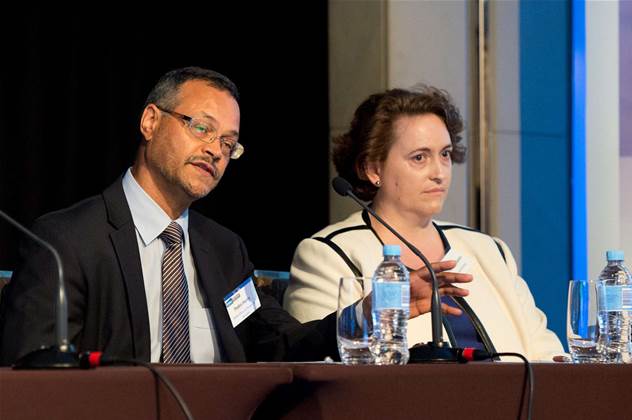The digital revolution, backed by public cloud services and delivered to powerful mobile devices, has rendered the most complex transactions easier than ever to consume.

As executives look to build digital services using ‘as-a-service’ models, the cost versus value of internal IT functions has come under considerable scrutiny.
Some IT departments have been hollowed out and pushed further away from the business, usually consigned a risk management function limited to security, availability and architecture governance. Backed into a corner, the IT function can too easily become a choke point on change, giving the business more cause to question its value.
Others - at times facing desperate staffing and budget constraints - have taken dramatic action to prove out their value.
Several of the submissions in this year’s iTnews Benchmark Awards - a large number of finalists among them - chose a ‘make or break’ bet on innovations that would deliver value from internal users right through to customers, and sometimes further still.
Australia’s best CIOs want to produce innovation ‘platforms’ - technology investments upon which value can multiply over time. The basic premise is that once the value of platform innovation has been proved amongst internal users, it can readily be adapted to offer similar value to customers, or better still be white-labelled or licensed for use by other organisations facing the same challenges.
The hallmark of success for such a strategy is when an IT function that has typically battled the label of being ‘a cost centre’ is delivering the business unambiguous, direct revenues on its own steam.
The model
Asked on stage at the Benchmark Awards which model of innovation they most sought to emulate, Apple was a predictable answer. Steve Jobs’ Apple, more than most companies, understands the value of platform, after Cupertino mastered the art of tying its expensive hardware to an ecosystem of easy-to-consume services.
But several others said they looked up to a company that doesn’t deliver products anywhere near as exciting: Amazon Web Services and its retail parent, Amazon.com.
Amazon.com was always a retailer, first and foremost, but the part of its story that appeals most to CIOs is that its IT department built such a strong platform for internal use that a case was later made to spin it out for broader consumption.
The technology behind Amazon Web Services was simple - the e-tailer’s IT shop was among the first to build a scalable compute cloud from out of the foundations of open source server virtualisation software (the Xen hypervisor), and also among the first to tie that capability to the web hosting control panel.
Originally planned as a means of subsidising the cost of excess capacity for Amazon’s own hosting, Amazon Web Services is now a giant in its own right - and a great example of what can be gained by turning internal innovation around 180 degrees and exposing it directly to customers.
Amazon’s platform story was made all the stronger when one of its largest customers - Netflix - created tools for it that far exceeded what the retailer had built for customers, and chose to release them more broadly to the user community under open source licensing. Platforms were built on platforms and attracted greater technology talent to both.
Award winners
As is often the case, many of the award winners at this year’s Benchmarks found themselves in a position where taking a bet on an internal innovation was their only choice.
“For us, it was about survival”, noted government CIO of the Year finalist Maria Milosavljevic of the Australian Crime Commission. Faced with a constrained fiscal environment and a government that has struggled to pass budget measures, the build of its ‘Fusion’ unstructured data store was the only alternative to scaling back the Commission’s stated ambitions and in turn its IT team.
Carsales CIO and 2015 Retail CIO of the Year Ajay Bhatia was also out of options. He’d long identified a need for the online retailer to find an alternative to licensing expensive search engines from third parties which were failing to live up to customer expectations.
“We looked at several open and closed source search engines,” he said. “Through all the research we hadn’t found a solution."
Bhatia took a gamble on an 18-month long quest to build a search engine that would enable car buyers to search across multiple fields of criteria simultaneously - three chosen models of car, for example, but within a single geography, price-range, colour or vintage.
The build, which took longer than expected, required a great deal of patience from the company. But the ‘Ryvuss’ search engine that resulted has delivered substantial rewards - Carsales page speeds were boosted by one second, there was a 16 percent drop in calls to contact centres, a 30 percent drop in emails to customer contact centre and a reduction in call waiting times.
Read on to find out more about the Benchmark winners...



_(20).jpg&h=140&w=231&c=1&s=0)







 iTnews Executive Retreat - Security Leaders Edition
iTnews Executive Retreat - Security Leaders Edition












_(1).jpg&h=140&w=231&c=1&s=0)



